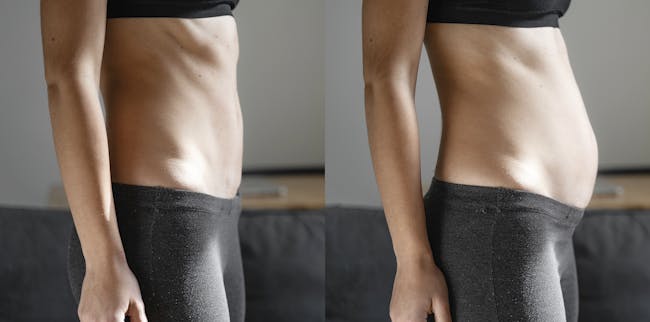
Separation of the abdominal muscles at the midline of the belly is a common manifestation of increased intra-abdominal pressure. Diastasis Rectus Abdominis (DRA) is usually painless but rather unpleasant in many ways, such as the pooch tummy appearance and core muscle weakness. Weak abs also mean a weak pelvic floor, which can lead to incontinence, constipation, and other embarrassing conditions. Untreated diastasis rectus also has a high risk of intestinal herniation. This is why it is crucial to seek proper treatment early on. TruWell Physical Therapy provides experienced physiotherapists and state-of-the-art equipment for rehabilitation of Diastasis Recti aka 'pooch tummy'.
Diastasis is usually seen in pregnant or postpartum women but can also affect men and children. Basically, it is caused by one of these reasons.
- Pregnancy
- Obesity
- Improper exercise
- Furthermore, family history, old age, liver cirrhosis, and cancerous growth also account for diastasis recti in some people.
DRA due to pregnancy
During pregnancy, your body produces large amounts of relaxing hormones that allow the body to expand, to accommodate the growing fetus. The weight of the fetus on the abdominal muscles can cause the separation at the midline. Diastasis recti affects 2/3 of all pregnancies, however, it is more common in multiparity, when there is a lesser age difference among the children. The pressure due to pushing action during vaginal delivery may also be the causative factor of abdominal separation.
DRA due to improper exercise
Muscle activation during physical training is a tricky concept. Sometimes, new trainers, or even professionals, may assume a faulty posture during exercise leading to overtraining of a specific muscle group and simultaneous weakening of the other group, due to the body's nature to achieve a balance. Weakness of rectus abdominis muscle leads to dissection at the midline.
DRA in children
All babies are born with some level of abdominal dissection, as it allows for the umbilical cord to pass. Once detached, it usually contracts and heals on its own. However, chronic forward pressure caused by respiratory or digestive problems can lead to delayed healing or an increase in the dissection, causing a bulge in the midline of the baby's belly.
Symptoms associated with untreated diastasis recti:
- Constipation
- Poor posture
- Urine dribbling
- Lower back pain
- Difficulty in lifting weights
- Pain during sexual activity
- Abdominal gap wider than 2 cm
A complication of DRA can lead to worsening symptoms, excessive pain, discomfort, or the development of an abdominal hernia. Precautions, early treatment, and regular monitoring of the condition are the best options to prevent any complications. Visit TruWell Physical Therapy for the assessment of your condition, plan the course of treatment with our physiotherapists, and find out what measures you can take to prevent any complications.
Sneak Peek into Physical Therapy for DRA
- Physiotherapeutic treatment usually involves controlled muscle activation through breathing exercises and core muscle exercises. Your PT will guide you on the safe way to perform exercises that will help you regain your muscle tone.
- They will also help you avoid exercises and activities that may cause an increase in intra-abdominal pressure, as it can cause worsening of your symptoms.
- Make sure you follow the dos and don'ts as guided by your therapists.
- Your therapist may prescribe an abdominal brace for support and safety.
- Electrotherapy, such as electrical muscle stimulation may be used in the treatment process to improve muscle tone.
- With compliance, you'll be able to see the gap shrinking over the time of several weeks.
General precautionary measures
- Avoid lifting any heavy weights.
- Instead of bending over, try squatting when picking an object from the floor.
- Regulate your fiber and water intake to ensure soft stools and avoid straining.
- Roll on your side when getting out of bed in the morning and lie on your side then turnover when getting back into bed.
At TruWell Physical Therapy, we aim to provide you with the best care possible. The safety and wellness of our clients are our foremost priorities. Visit or contact us for further information.


